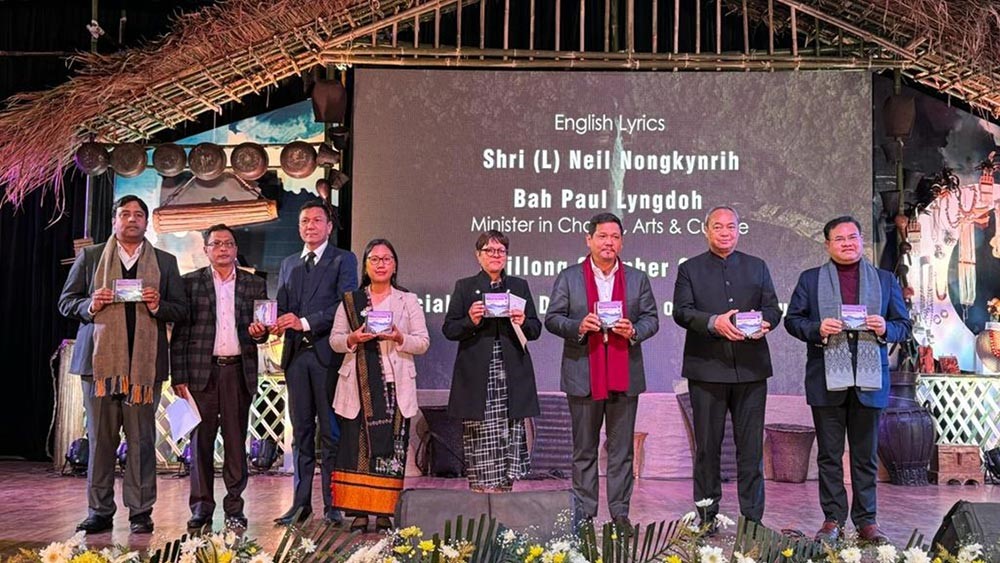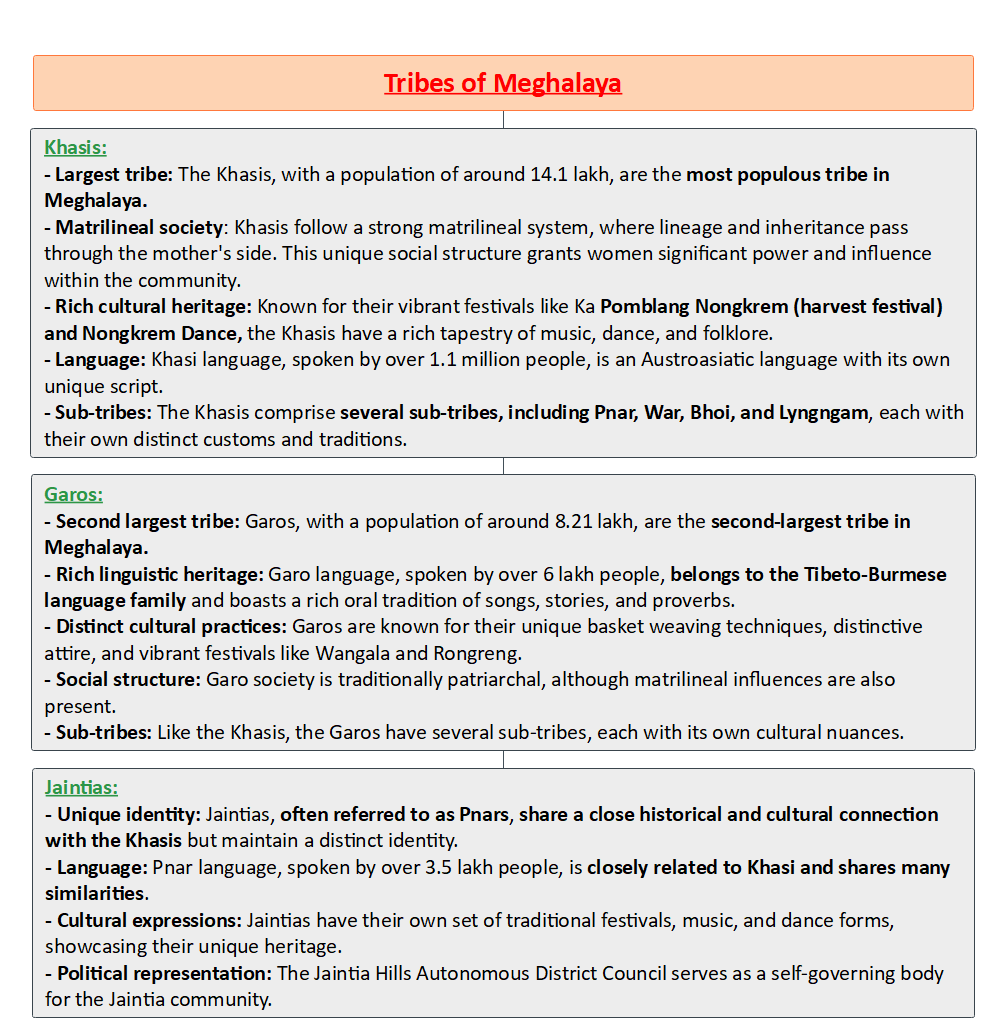Free Courses Sale ends Soon, Get It Now


Free Courses Sale ends Soon, Get It Now



Copyright infringement not intended
Picture Courtesy: www.sentinelassam.com
Context: The newly launched Meghalaya state anthem, featuring Khasi, Garo, and English, has sparked controversy due to the absence of the Jaintia or Pnar language.
Details
Language Inclusion
Unique History and Identity of the Jaintia Tribe
Call for Inclusion of Pnar in the Anthem
Government's Response
Concerns Over Slippery Slope
Commonalities v/s Differences

Conclusion
|
PRACTICE QUESTION Q. Many indigenous communities in India reside in ecologically sensitive areas. How can development projects and conservation efforts balance the need for economic progress with protecting the rights and livelihoods of these communities and their traditional ecological knowledge? |
© 2024 iasgyan. All right reserved